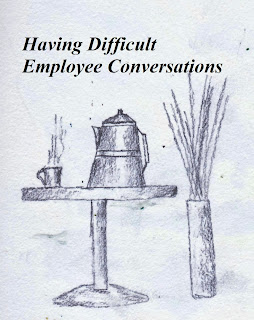The authors Waldherr and Muck (2011) discuss how
biology and personality contribute to communication behavior. They advocate
embedding language into the Five-Factor Theory to better assess language as a
characteristic adaptation to personality. The arguments put forward in their
literary research lean more heavily on personality as a key factor that has two
major running themes.
Communication is a circular process as each of the
actors is both the communicator and the recipient at various times during a
discussion (Schramm, 1954). Each person
encodes, interprets and decodes messages differently making the communication
process unique. Most of this process is internal to the individual and cannot
be easily evaluated. Focusing on verbal, non-verbal and para-verbal language
cues can help in evaluating communication patterns.
Communication is seen as a reoccurring behavioral pattern
that is personality based. It is expressed in varying ways in different situations
to achieve directed goals. How one communicates in one situation or in a next
will have similar deeply embedded goals and expressive styles even though the
terms, words, and mannerisms may be situational.
Communication behavior can be
seen as “the way one verbally or para-verbally
interacts to signal how literal meaning should be taken, interpreted, filtered,
or understood” (Norton, 1978, p. 99). It is viewed as a stable pattern of
behavior that stays relatively consistent across varying situations. It is commonly believed that the two major
themes of assertiveness and responsiveness exist across all communicative
behavior (Burgoon and Hale, 1987)
Personality and communication can
also be integrally tied together. Communication is personality driven and is
based within a person’s biology (Beatty and McCroskey, 1998). Individuals are predetermined to communicate
in certain manners based upon their genetic makeup expressed within the
environment. How a person communicates and whether or not a person communicates
is rooted in their personality development.
Behavior and personality often
mesh within the Five-Factor Theory of Neuroticism, Extraversion, Openness,
Agreeableness, and Conscientiousness (McCrae and Costa, 1996). The biology of a
person predisposes them to certain types of traits that mix with their
personality which are expressed in certain ways that are influenced by
situational factors. These situational factors are dependent on culture,
education, experience, and other life influences.
A person’s can also influence
communication through a self-construct. This construct is dependent on how a
person views themselves in terms of being independent or interrelated to others
(Markus and Kitayama, 1991). Self-construct is how a person views themselves in
relation to others based upon values, beliefs, manners, skills, and a whole
host of other issues. When self-construct changes it creates natural changes in
communicative patterns.
The authors believe that it is
important to define communication as personality rooted in the Five-Factor
Theory. They also believe that communication follows two general patters of
assertiveness or responsiveness. Assertiveness is the desire to dominate others
while responsiveness is more closely akin to love and interrelatedness. These
two themes make their way throughout the varying learned communication skills
people develop over time.
The implications of the study suggest
that learned skills and experiences enhance an employee’s communication skills.
The patterns of communication will remain relatively the same but the
complexity by which they express themselves will grow and develop over time.
Business students should learn proper communication skills in order to fully
express themselves in appropriate ways to others within the workplace. The
learned skills can influence everything from workplace conflict to customer
service and could have an impact on the bottom line. This is why it is
important to hire for personality and train for skills.
Beatty, M. J. & McCroskey, J.
C. (1998). Interpersonal communication as temperamental expression: A
communibiological paradigm. In J. C. McCroskey, J. A. Daly, M. A. Martin, &
M. J. Beatty (Eds.), Communication and personality: Trait perspectives (pp.
41_67). Cresskill, NJ: Hampton.
Burgoon, J. K. & Hale, J. L.
(1987). Validation and measurement of the fundamental themes of relational
communication. Communication Monographs, 54, 19_41.
Markus, H. R. & Kitayama, S.
(1991). Culture and the self: Implications for cognition, emotion, and
motivation. Psychological Review, 98, 224_253.
McCrae, R. R. & Costa, P. T.
(1996). Toward a new generation of personality theories: Theoretical contexts
for the Five-Factor Model. In J. S. Wiggins (Ed.), The Five Factor Model of
Personality: Theoretical perspectives (pp. 51_87). New York, NY: Guilford
Press.
Norton, R. (1978). Foundation of
a communicator style construct. Human Communication Research, 4,
99_112.
Schramm, W. (Ed.). (1954). The
process and effects of mass communication. Urbana, IL: University of
Illinois Press.
Waldherr, A. & Muck, P. (2011). Towards an
integrative approach to communication styles: the interpersonal circumplex and
the five-factor theory of personality as frames of reference. Communications: The European Journal of
Communication Research, 36 (1).

